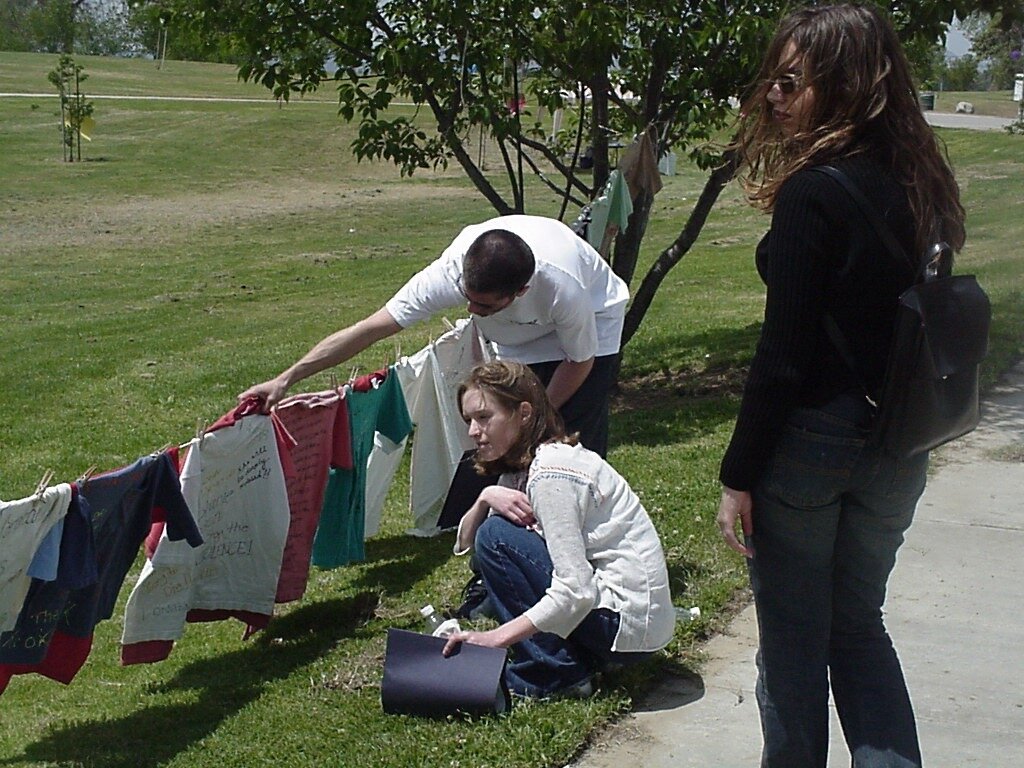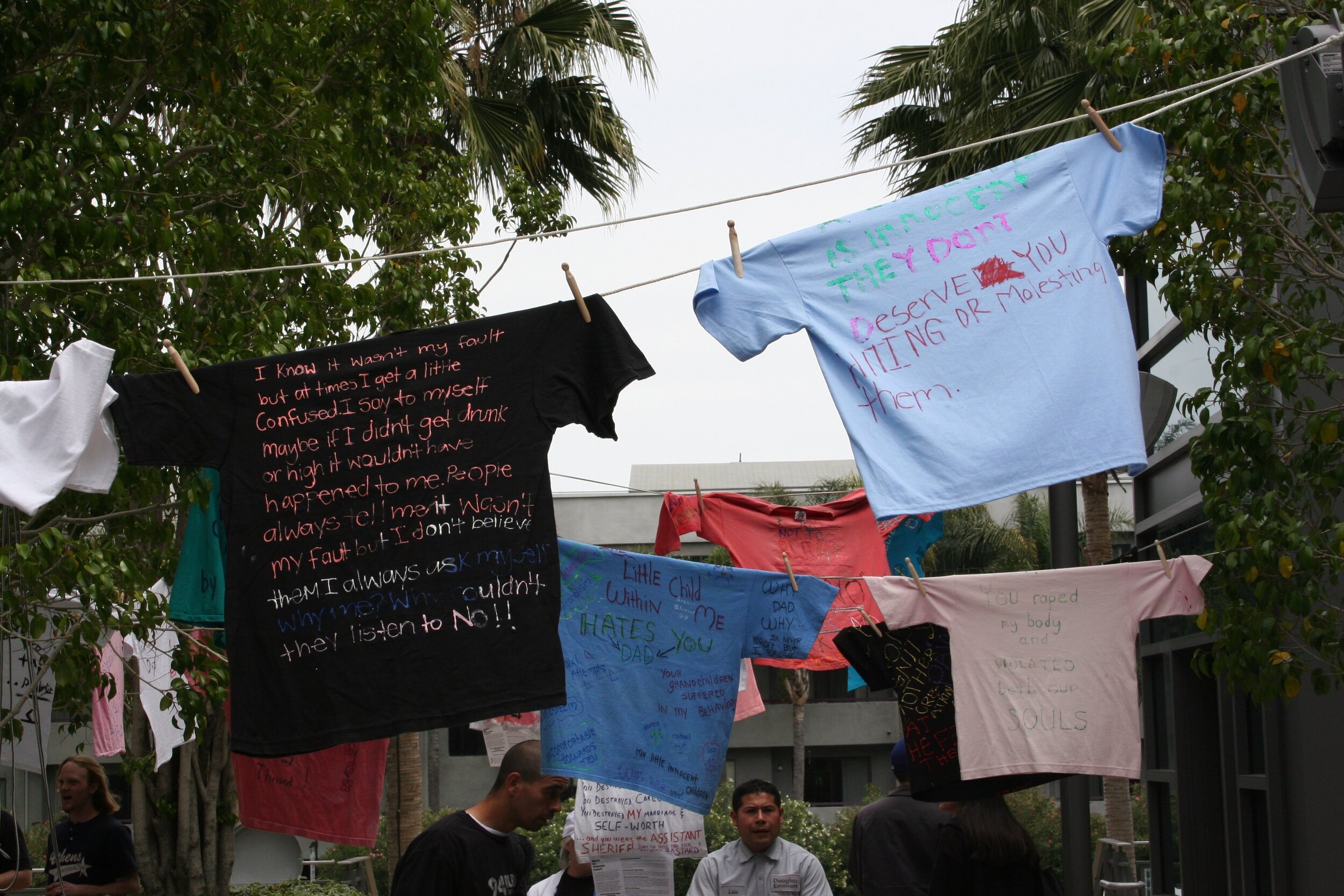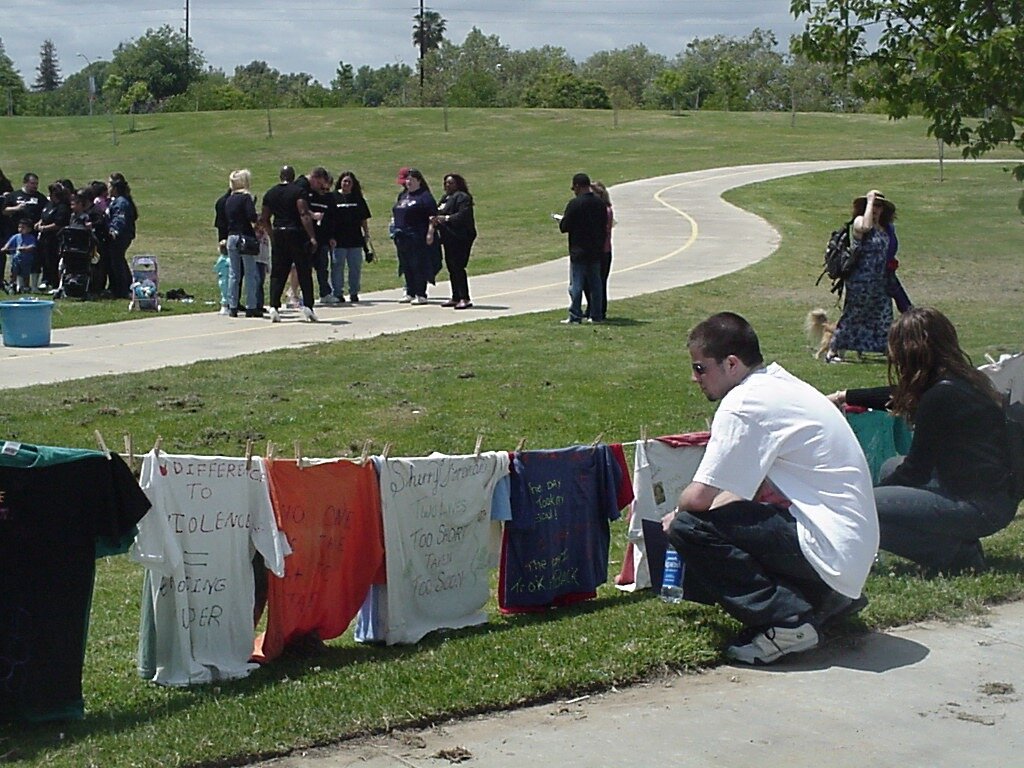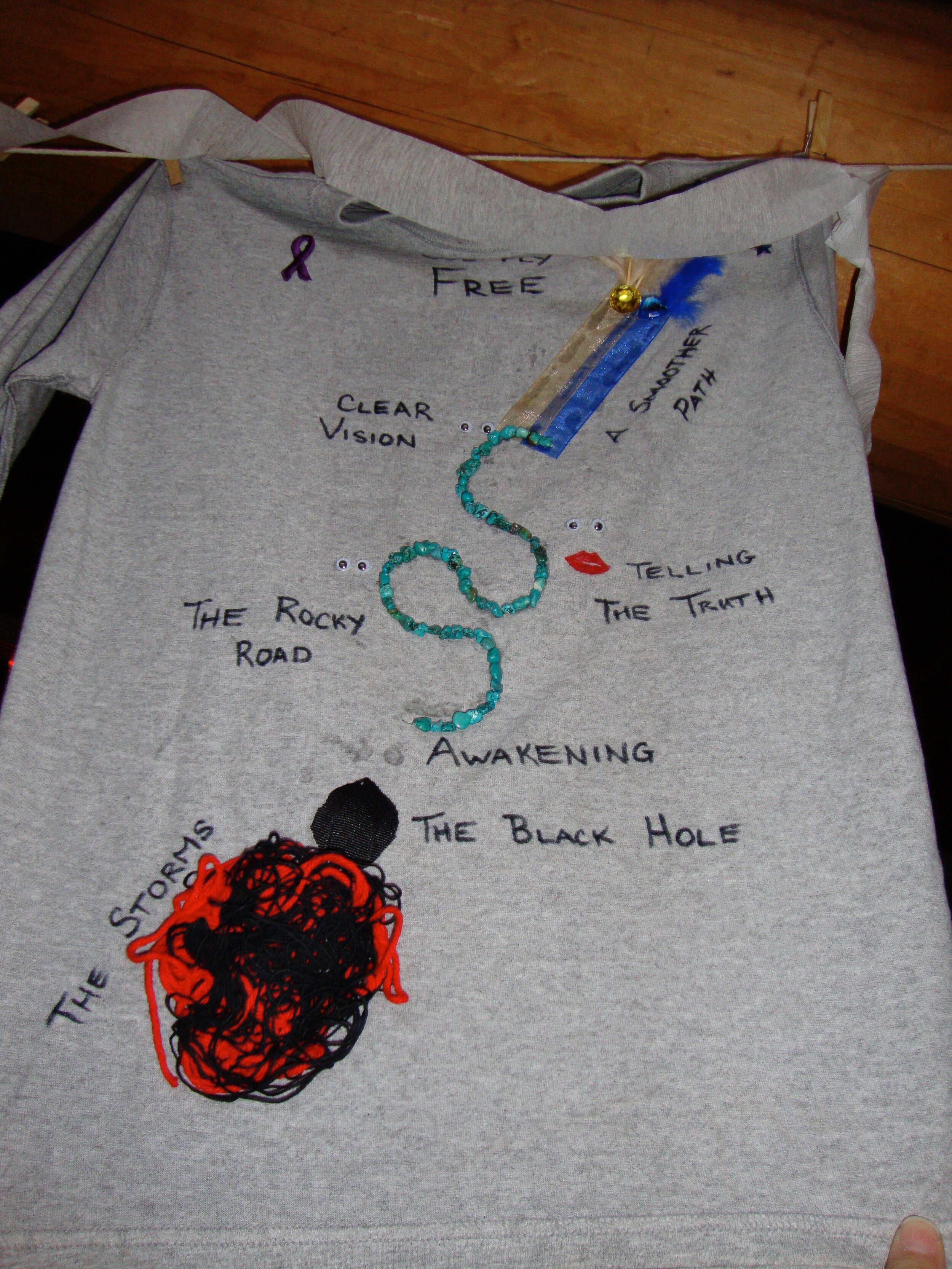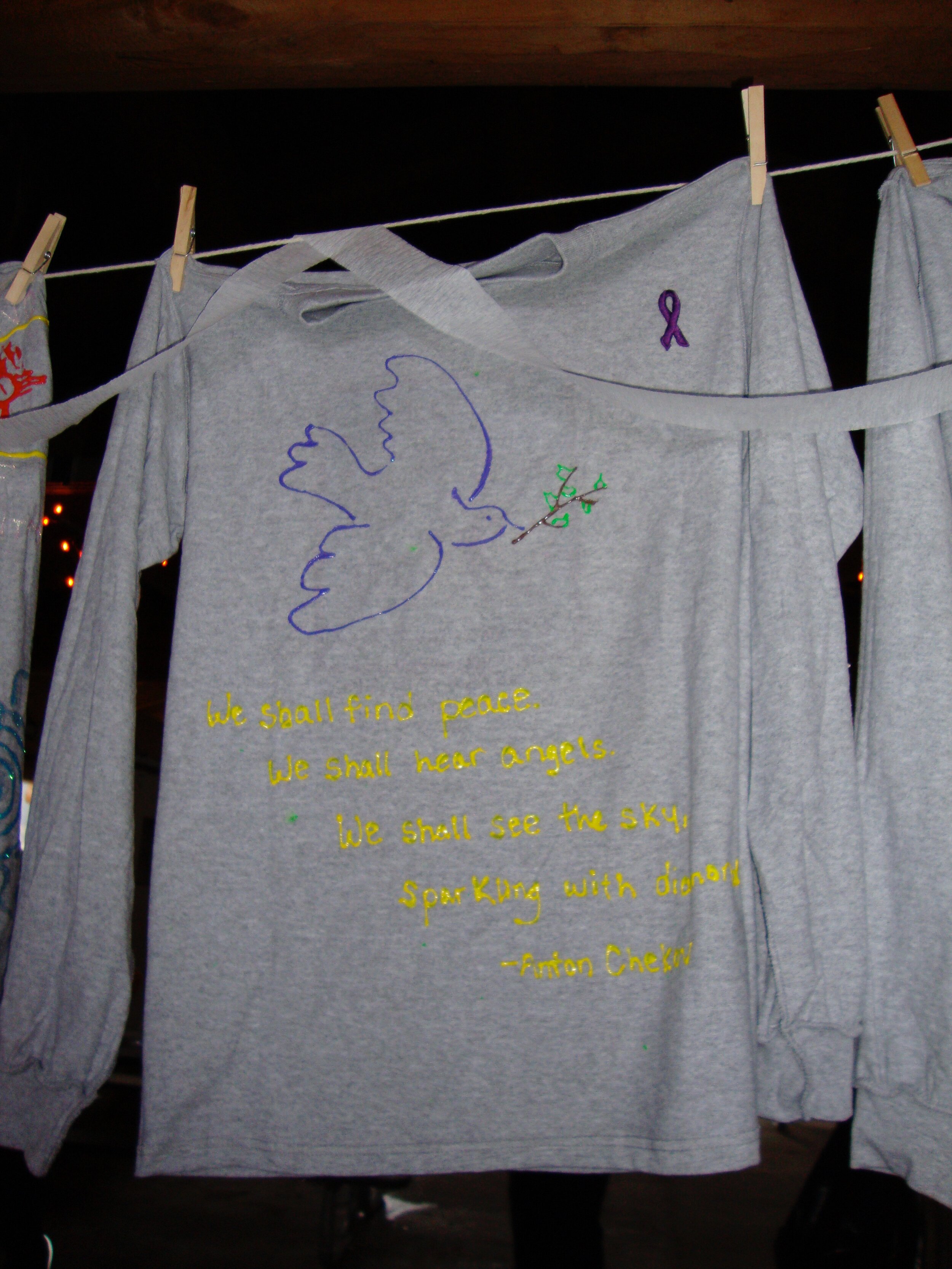Clothesline Project
One of the women, visual artist Rachel Carey-Harper, moved by the power of the AIDS quilt, presented the concept of using shirts - hanging on a clothesline - as the vehicle for raising awareness about this issue. The idea of using a clothesline was a natural. Doing the laundry was always considered women's work and in the days of close-knit neighborhoods, women often exchanged information over backyard fences while hanging their clothes out to dry.
The concept was simple - let each woman tell her story in her own unique way, using words and/or artwork to decorate her shirt. Once finished, she would then hang her shirt on the clothesline. This very action serves many purposes. It acts as an educational tool for those who come to view the Clothesline; it becomes a healing tool for anyone who make a shirt - by hanging the shirt on the line, survivors, friends and family can literally turn their back on some of that pain of their experience and walk away; finally it allows those who are still suffering in silence to understand that they are not alone
October of 1990 saw the original Clothesline Project with 31 shirts displayed on a village green in Hyannis, Massachusetts as part of an annual "Take Back the Night" March and Rally. Throughout the day, women came forward to create shirts and the line kept growing
At the moment The Clothesline Project estimates there are 500 projects nationally and internationally with an estimated 50,000 to 60,000 shirts. Your organization can create t-shirts for a Clothesline Project at a separate event, you can obtain t-shirts already made from a local Clothesline Project.


